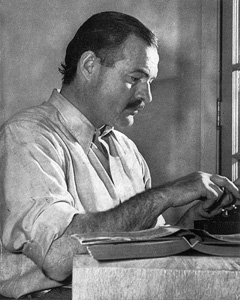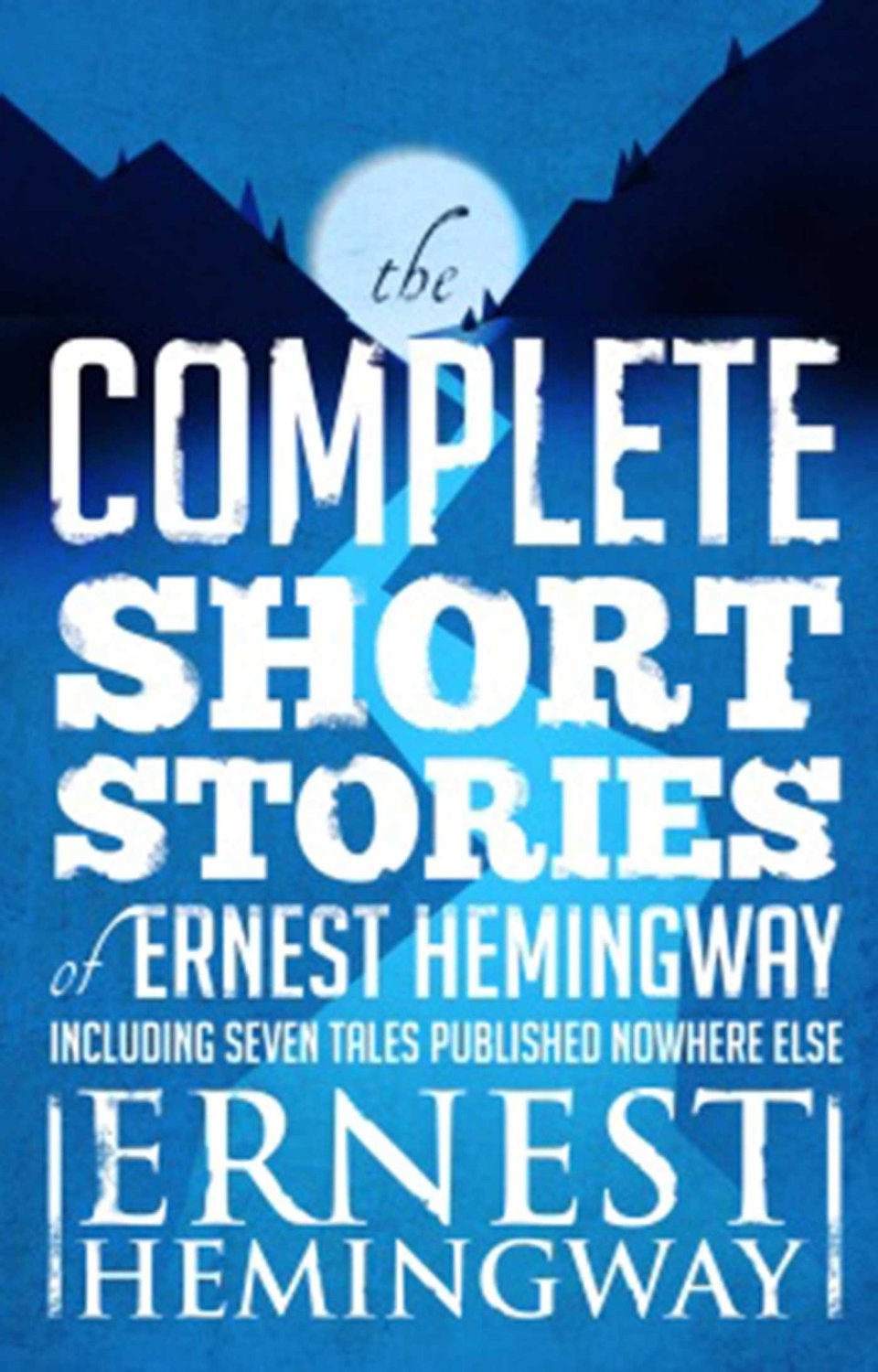
photo © Mark Stosberg, 2010
by Peter Jordan
When I was younger I took a class on Ernest Hemingway’s short stories. Before taking the class I had always liked the few short stories of his I had read, without ever thinking too much about them. All that changed when I read ‘Up in Michigan’. I knew it was very early Hemingway, and I didn’t think it was a particularly good story. But it still made me feel a certain way without knowing at all why. It was only later, when I returned to university to study Hemingway’s early fiction, that I discovered why that story made me feel the way it did.
The original draft was written before Hemingway left for Paris in 1921. It was in Paris a year later that the final changes were made to the story, under the tutelage of Ezra Pound. Pound had just completed the revisions on T.S. Eliot’s ‘The Waste Land’ and was well known in the writing community as something of a spotter and developer of talent. He also expounded an Imagist doctrine promoting clarity of expression through the use of precise visual images. Hemingway rewrote the story ending during the time that Pound instructed him that symbols must first be natural objects. Hemingway was a keen pupil and a quick learner. Indeed, ‘Up in Michigan’s’ final paragraph might just be the place to look if you want to see where Hemingway made the leap from young budding writer to potential literary superstar.
 The story is told almost exclusively from the point of view of Liz Coates, a young waitress infatuated with Jim Gilmore, the town blacksmith. When Jim returns from a hunting trip he celebrates in the little restaurant in which she works, drinking until drunk. He then fondles her in the kitchen and they go for a walk to the dock. At the dock he again fondles her, she is frightened and begs him to stop, he forces himself upon her then passes out on top of her.
The story is told almost exclusively from the point of view of Liz Coates, a young waitress infatuated with Jim Gilmore, the town blacksmith. When Jim returns from a hunting trip he celebrates in the little restaurant in which she works, drinking until drunk. He then fondles her in the kitchen and they go for a walk to the dock. At the dock he again fondles her, she is frightened and begs him to stop, he forces himself upon her then passes out on top of her.
The story is controversial to this very day – it is effectively a date rape – yet Hemingway, never the most delicate of writers, handles it with sensitivity. However, he struggled with the ending. In New Essays on Hemingway’s Fiction, edited by Paul Smith, two earlier versions of the ending are discussed: one where Liz meets Jim the next day and is embarrassed, another in which she worries about being pregnant. Hemingway was happy with neither. Pound suggested he study the work of T.S. Eliot and James Joyce, with particular emphasis on how each writer has the reader experience an emotion as if it were their own. This is the final version of the ending that Hemingway settled on:
Jim was asleep. He wouldn’t move. She worked out from under him and sat up and straightened her skirt and coat and tried to do something with her hair. Jim was sleeping with his mouth a little open. Liz leaned over and kissed him on the cheek. He was still asleep. She lifted his head a little and shook it. He rolled his head over and swallowed. Liz started to cry. She walked over to the edge of the dock and looked down to the water. There was a mist coming up from the bay. She was cold and miserable and everything felt gone. She walked back to where Jim was lying and shook him once more to make sure. She was crying.
“Jim,” she said. “Jim. Please, Jim.”
Jim stirred and curled a little tighter. Liz took off her coat and leaned over and covered him with it. She tucked it around him neatly and carefully. Then she walked across the dock and up the steep sandy road to go to bed. A cold mist was coming up through the woods from the bay.
In the story, Hemingway creates a simply written situation, which terminates in a sensory experience. This combination of style and technique employed to suggest Liz’s inner feelings is illustrated perfectly by Eliot’s explanation of the objective correlative (from his essay on Hamlet):
The only way of expressing emotion in the form of art is by finding an ‘objective correlative’; in other words, a set of objects, a situation, a chain of events, which shall be the formula of that particular emotion; such that when the external facts, which must terminate in sensory experience, are given, the emotion is immediately evoked.
This concept wasn’t new. Chekhov employed it in almost every one of his many stories and it was an extension of a Washington Allston theory on art. It is essentially a super metaphor – through comparison to exterior things the nature of something inexpressible in language is conveyed: sadness, disappointment, anger, love, trauma. This may sound simple – try it, it’s anything but. Overdo it and your writing appears contrived, under do it and the reader doesn’t have a clue what it is that you’re trying to impart.
Consider Hemingway’s rewrite:
There was a mist coming up from the bay. She was cold and miserable and everything felt gone […] Then she walked across the dock and up the steep sandy road to go to bed. A cold mist was coming up through the woods from the bay.
 The visual image of the mist appears first as a natural phenomenon, then the symbolic power of the mist is achieved after we are told she is crying. Hemingway doesn’t tell us directly how Liz feels when she looks at the water, instead, we are given an equivalent formula for the required emotion: ‘a mist coming down from the bay.’ Through the use of the objective correlative, Hemingway creates the possibility of the reader experiencing the same feelings and emotions as Liz.
The visual image of the mist appears first as a natural phenomenon, then the symbolic power of the mist is achieved after we are told she is crying. Hemingway doesn’t tell us directly how Liz feels when she looks at the water, instead, we are given an equivalent formula for the required emotion: ‘a mist coming down from the bay.’ Through the use of the objective correlative, Hemingway creates the possibility of the reader experiencing the same feelings and emotions as Liz.
When the story was eventually published, Hemingway was asked by his trusted friend and editor Max Perkins to take out the sex scene. It was described as ‘inaccorachable’ by Hemingway’s mentor Gertrude Stein, who compared it to a painting that could never be displayed. Nevertheless, Hemingway was determined it should not be edited, saying, ‘[T]here on the dock it got suddenly absolutely right and it is the point of the whole story and the beginning of all the naturalness I ever got’ (from a letter collected in Ernest Hemingway Selected Letters 1917-1961). There ‘on the dock’ is where the sex scene takes place, ‘the point of the whole story’ and the ‘naturalness’ that Hemingway refers to is the objective correlative. This idea of attempting to charge a word or words so that it creates the required emotion in the reader without saying it ‘bang out’ – as Katherine Mansfield put it – was also a pet theory of Pound’s. In his ABC of Reading, Pound states: ‘You use a word to throw a visual image on a reader’s imagination…’
The reason why I feel so strongly about the ending to this story is because of the way it is delivered: Hemingway does not tell me how Liz feels, I supplant my own experience and moral code into the void having been led there by the information – that is, what happens earlier in the story and, more importantly, on the dock. Once primed, I’m presented with the natural symbolism – the mist coming up from the bay – which triggers the emotion. Hemingway would go on to perfectly employ these Imagist theories so successfully in all of his later work and the very moment when he made the breakthrough is in those final two paragraphs of ‘Up in Michigan’.
~
 Peter Jordan is a short story writer. His work has been shortlisted for various competitions and published in various anthologies. His short stories are available for download @etherbooks.com and published @pennyshorts. He lives in Belfast, where he is taking a PhD in Creative Writing. You will find him on twitter @PM_Jordan.
Peter Jordan is a short story writer. His work has been shortlisted for various competitions and published in various anthologies. His short stories are available for download @etherbooks.com and published @pennyshorts. He lives in Belfast, where he is taking a PhD in Creative Writing. You will find him on twitter @PM_Jordan.

